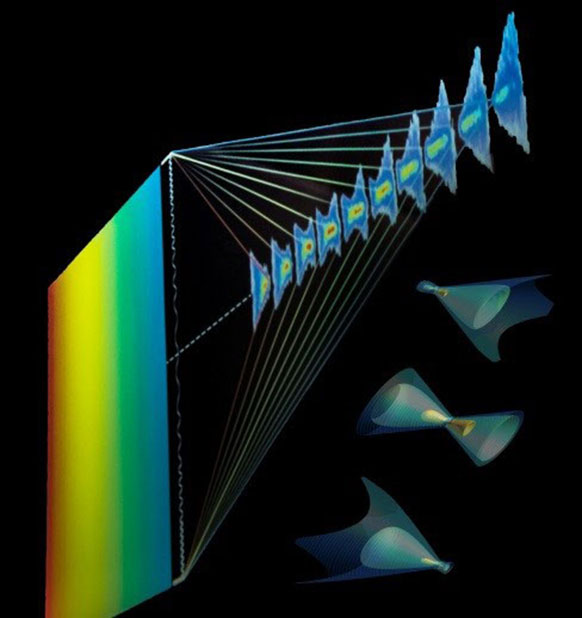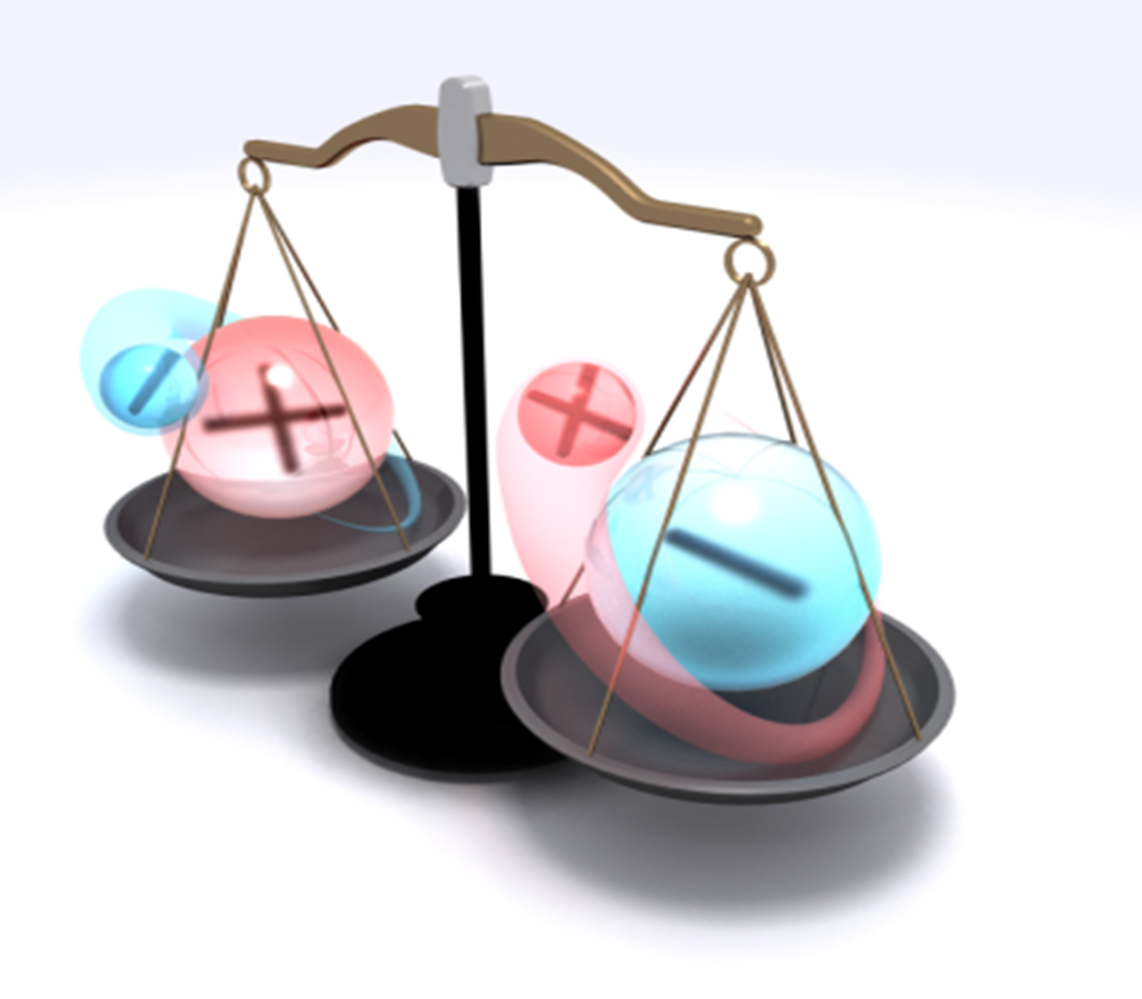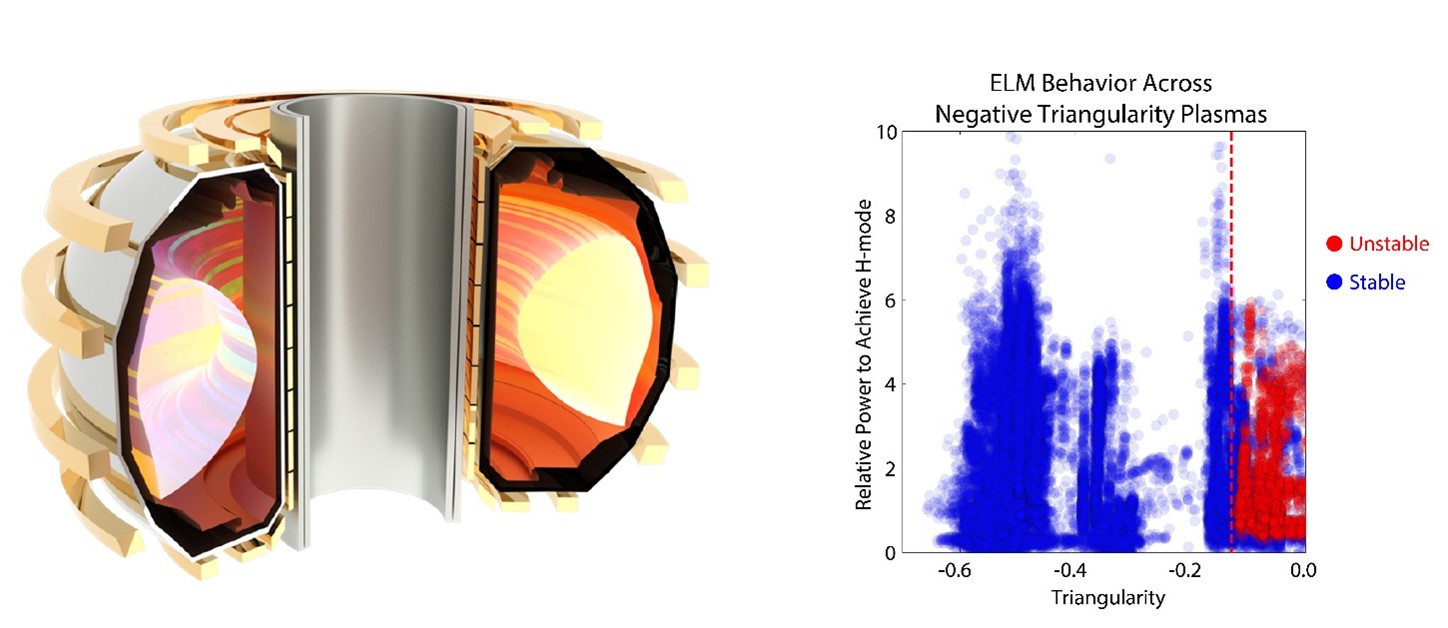Flying Focus: Controlling Lasers over Long Distances
New technique allows the spatiotemporal control of laser intensity, potentially changing the way laser-based accelerators are optimized.

The Science
As a child, you might have used a magnifying glass to focus the sun's light on the sidewalk. The lens of the glass let you concentrate the sun's energy by converging the light rays on a point. If you wanted to focus the light on a moving piece of paper, you needed to move the lens or make the focus (the concentration of light) move. Letting the focus move creates a concept called the flying focus. For the first time, a team found a way to use the flying focus to better control lasers’ intensity over longer distances. The flying focus enables a laser’s peak intensity to propagate over long distances and at any velocity—including faster than the speed of light. They created the flying focus by combining a lens that focuses colors at different distances with a chirped laser beam (a laser with colors that change in time).
The Impact
With the flying focus technique, scientists captured some of the fastest movies ever recorded. That is, they captured movies of the moving focal spot at a rate of one-trillionth of a frame per second. The technique has the potential to help researchers design the next generation of high-power lasers or produce light sources with novel wavelengths. These new tools could meet the challenges of creating materials for better batteries, highly efficient solar panels, and more.
Summary
A novel focusing scheme, called a flying focus, uses a chromatic focusing system combined with chirped laser pulses to enable a small-diameter laser focus to propagate nearly 100 times its Raleigh length. Experiments at the Laboratory for Laser Energetics, located at the University of Rochester, captured movies of the flying focus with frames that were faster than a trillionth of a second to demonstrate its ability to co- or counter propagate along the laser axis at any velocity. Subluminal to superluminal focal-spot velocities were measured to generate a nearly constant peak intensity over 4.5 millimeters.
The flying focus presents an opportunity to extend interaction lengths and overcome current limitations in laser-plasma applications. It has the ability to propagate a constant intensity over long distances. Also, it decouples the focus spot velocity from the group velocity of light. Further, it moves in the forward or backward directions. The flying focus is particularly interesting in systems that require a high intensity driver to propagate at a matched velocity over an extended distance to avoid dephasing. The flying focus can drive ionization waves at any velocity and could overcome current limitations in photon accelerators, laser-wakefield accelerators, high-order frequency conversion, terahertz generation, and laser-plasma amplifiers. The flying focus presents an opportunity to extend interaction lengths and overcome current limitations in laser-plasma applications.
Contact
Dustin H. Froula
University of Rochester
dustin.froula@rochester.edu
Funding
The Department of Energy Office of Science, Fusion Energy Sciences; the University of Rochester; and the New York State Energy Research and Development Authority funded this research.
Publications
D.H. Froula, D. Turnbull, A.S. Davies, T.J. Kessler, D. Haberberger, J.P. Palastro, S.W. Bahk, I.A. Begishev, R. Boni, S. Bucht, J. Katz, and J.L. Shaw, “Spatiotemporal control of laser intensity.” Nature Photonics 12, 262 (2018). [DOI: 10.1038/s41566-018-0121-8]
Related Links
EurekAlert public release: Rochester researchers use 'flying focus' to better control lasers over long distances
Physical Review A article: Ionization waves of arbitrary velocity driven by a flying focus
Physical Review Letters article: Raman amplification with a flying focus
Highlight Categories
Program: FES
Performer: University
Additional: Collaborations , Non-DOE Interagency Collaboration



